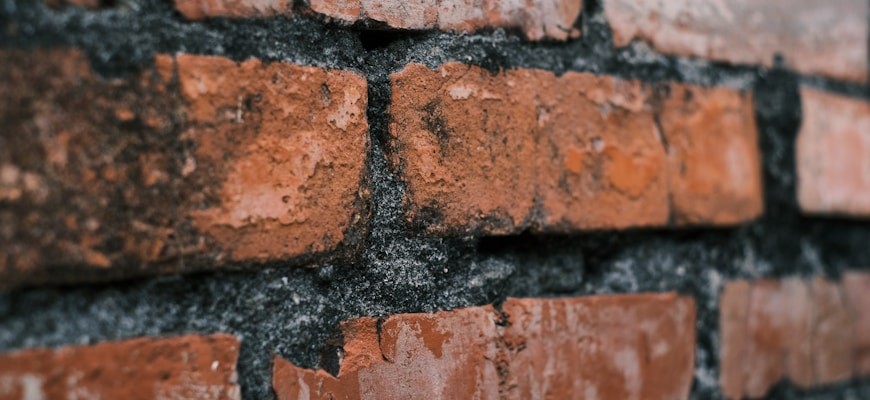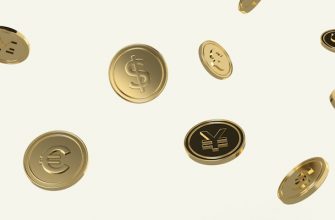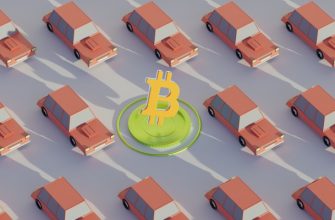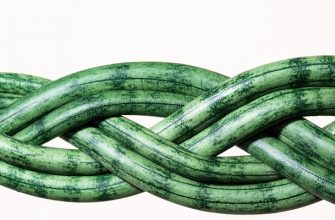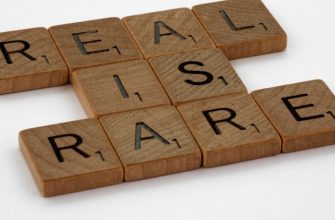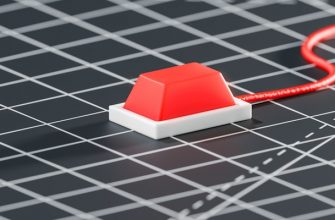- Understanding Real World Assets: Bridging Physical and Digital Economies
- The Role of RWAs in the Evolving Blockchain Landscape
- Tokenization of Assets: Unlocking Value through Blockchain Technology
- Challenges and Opportunities in Integrating RWAs with Decentralized Finance
- Navigating Regulatory Frameworks for Real World Asset Tokenization
- Future Trends: How RWAs Will Shape the Next Wave of Blockchain Innovation
Understanding Real World Assets: Bridging Physical and Digital Economies
Real World Assets (RWA) represent a pivotal concept in the integration of physical and digital economies. These assets, which can include real estate, commodities, and other tangible goods, are increasingly being linked to blockchain technology, enhancing their accessibility and liquidity. By tokenizing real-world assets, the transition from traditional ownership models to decentralized finance (DeFi) platforms becomes feasible, facilitating a broader participation in the financial ecosystem.
One of the primary advantages of Real World Assets is their ability to bridge the gap between the physical and digital realms. Traditional assets often face barriers such as high entry costs and limited market access. However, through tokenization, these challenges can be mitigated. Tokenized RWAs allow for fractional ownership, enabling individuals to invest in high-value assets without the need for substantial capital. This democratization of investment opportunities is transforming how individuals and institutions engage with various asset classes.
- Enhanced Liquidity: Tokenization of Real World Assets increases liquidity by allowing assets to be traded on blockchain platforms, enabling quicker transactions and ease of transfer.
- Transparency: The use of blockchain technology ensures that all transactions involving Real World Assets are recorded transparently, reducing the risk of fraud and enhancing trust among participants.
- Global Accessibility: By digitizing RWAs, investors from around the world can access a diverse range of assets, fostering a more inclusive financial ecosystem.
- Lower Costs: The efficiencies brought by blockchain technology can reduce transaction costs associated with buying, selling, and managing Real World Assets.
As the adoption of Real World Assets continues to grow, the implications for both investors and the broader economy are profound. The intersection of physical assets with digital platforms creates a new paradigm for ownership and investment, driving innovation in how wealth is created and managed. By embracing Real World Assets, individuals and businesses can leverage the benefits of blockchain technology, paving the way for a more interconnected and efficient economic landscape.
In summary, Real World Assets serve as a crucial link between the physical and digital economies, offering unique opportunities for investment and ownership. Their integration into blockchain frameworks not only enhances liquidity and accessibility but also fosters a more transparent and efficient market. As the landscape evolves, understanding the potential of RWAs will be essential for navigating the future of finance.
The Role of RWAs in the Evolving Blockchain Landscape
Real World Assets (RWAs) are becoming increasingly significant in the blockchain ecosystem, offering tangible value to digital platforms. As the blockchain landscape evolves, RWAs serve as a bridge between traditional finance and innovative decentralized technologies. This integration enhances the utility of blockchain, allowing for a more extensive range of applications and investment opportunities.
The presence of RWAs in the blockchain sector facilitates the tokenization of physical assets, such as real estate, commodities, and intellectual property. This tokenization process not only increases liquidity but also democratizes access to investment opportunities, enabling a broader audience to participate in markets that were previously restricted to institutional investors.
- Increased Liquidity: Tokenizing RWAs allows for fractional ownership, which enhances liquidity and enables easier trading on blockchain platforms.
- Accessibility: By leveraging RWAs, blockchain technology opens up investment avenues for individuals who may lack the capital to invest in entire assets.
- Transparency: The immutable nature of blockchain provides a transparent ledger for RWAs, ensuring trust and security in transactions.
- Smart Contracts: RWAs can be integrated with smart contracts, facilitating automated processes such as asset transfers and compliance checks.
- Global Reach: Blockchain networks enable RWAs to be traded globally, breaking down geographic barriers and expanding market reach.
The role of RWAs in the blockchain ecosystem underscores the potential for enhanced efficiency and innovation. As more assets are tokenized, the synergy between RWAs and blockchain technologies will likely accelerate, fostering a more inclusive financial environment. This transformation not only benefits investors but also paves the way for new business models and economic structures in the digital age.
Tokenization of Assets: Unlocking Value through Blockchain Technology
The concept of asset tokenization represents a transformative approach to unlocking value through blockchain technology. By converting real-world assets into digital tokens, individuals and organizations can enhance liquidity and accessibility. Tokenization of assets provides a mechanism for fractional ownership, enabling broader participation in markets that were previously limited to wealthy investors.
- Real estate, art, and commodities are among the many asset classes that can be tokenized.
- Blockchain technology ensures transparency and security in transactions, fostering trust among participants.
- Smart contracts automate processes, reducing costs and increasing efficiency in asset management.
- Investors can trade tokens on various platforms, enhancing market accessibility and liquidity.
With the rise of decentralized finance (DeFi), the tokenization of assets is becoming increasingly relevant. It provides a pathway for individuals to invest in a diverse range of asset classes without traditional barriers. This innovation not only democratizes access to investments but also creates new opportunities for wealth generation.
Moreover, the tokenization process involves the creation of a digital representation of an asset on the blockchain, which can significantly streamline the buying and selling processes. This digital representation can be easily transferred, tracked, and audited, offering unparalleled transparency in ownership and transaction history.
- Enhanced liquidity allows for quicker transactions and better price discovery.
- Fractional ownership opens investment opportunities to a wider audience, allowing for smaller investments in high-value assets.
- By leveraging blockchain technology, the tokenization of assets can reduce the need for intermediaries, lowering fees and expediting the transaction process.
As industries continue to explore the potential of tokenized assets, the integration of blockchain technology is set to revolutionize the way assets are managed, traded, and valued. The tokenization of assets represents a significant step forward in creating a more inclusive and efficient financial ecosystem.
Challenges and Opportunities in Integrating RWAs with Decentralized Finance
The integration of Real World Assets (RWAs) with Decentralized Finance (DeFi) presents both significant challenges and promising opportunities. Understanding these dynamics is crucial for stakeholders aiming to navigate this evolving landscape. RWAs can include physical assets such as real estate, commodities, and financial instruments, which when combined with DeFi protocols, can enhance liquidity and accessibility.
- Regulatory Hurdles: One of the primary challenges in integrating RWAs with DeFi is the regulatory environment. Different jurisdictions have varying laws regarding asset ownership and transfer, which can complicate the seamless integration of RWAs into blockchain networks.
- Valuation Issues: Accurately valuing RWAs can pose a significant obstacle. Unlike cryptocurrencies that have market-driven prices, RWAs often require appraisals and other methodologies to ascertain their worth, which can lead to discrepancies.
- Technological Limitations: The current infrastructure of DeFi platforms may not be fully equipped to handle the complexities of RWAs. This includes challenges related to smart contracts, asset tokenization, and ensuring security against fraud.
- Liquidity Concerns: While DeFi aims to enhance liquidity, the integration of RWAs can lead to liquidity issues. Physical assets are less liquid compared to digital assets, which can affect trading and investment opportunities.
- Interoperability: The seamless interaction between various DeFi protocols and RWAs is essential. The lack of standardized frameworks can hinder effective integration, making it challenging for users to navigate different platforms.
Despite these challenges, the opportunities in integrating RWAs with DeFi are substantial. The potential for increased liquidity, enhanced asset utilization, and the democratization of investment opportunities can reshape the financial landscape.
- Enhanced Liquidity: By tokenizing RWAs, the liquidity of traditionally illiquid assets can be improved, allowing for more trading and investment opportunities.
- Broader Access: DeFi platforms can offer broader access to investment opportunities in RWAs for individuals and institutions that were previously excluded from traditional markets.
- Innovation in Financial Products: The integration of RWAs can lead to the creation of innovative financial products, such as fractional ownership and collateralized lending, which can attract a diverse range of investors.
- Transparency and Security: Blockchain technology can enhance transparency and security in the management and transfer of RWAs, leading to greater trust among participants.
- Global Market Reach: The decentralized nature of DeFi allows for a global reach, enabling investors from different regions to engage in RWA investments that were previously limited to local markets.
In summary, while the integration of RWAs with Decentralized Finance faces several challenges, the opportunities it presents can significantly transform the financial ecosystem. Stakeholders must remain vigilant and innovative, addressing regulatory and technical hurdles to fully realize the potential of RWAs in the DeFi space.
Navigating Regulatory Frameworks for Real World Asset Tokenization
Navigating the complex landscape of regulatory frameworks is essential for the successful tokenization of real-world assets (RWAs). With the rise of blockchain technology, the need for a clear understanding of legal and regulatory implications has become more crucial than ever. As organizations explore the potential of RWAs, they must consider the diverse legal environments across different jurisdictions.
- Understanding Jurisdiction: Each country has its own regulations governing the tokenization of assets. It is vital to identify the legal frameworks that apply to RWAs in specific regions.
- Compliance Requirements: Adhering to compliance standards is non-negotiable. This includes Know Your Customer (KYC) and Anti-Money Laundering (AML) regulations, which help ensure the legitimacy of tokenized assets.
- Legal Structures: Establishing the appropriate legal structure for tokenized RWAs can facilitate smoother transactions. Different structures may include corporations, trusts, or special purpose vehicles.
- Intellectual Property Considerations: Protecting intellectual property rights is critical when tokenizing assets. Understanding how these rights are treated under various laws can safeguard innovations.
- Tax Implications: Tokenization can have significant tax consequences. Consulting with tax professionals to navigate these implications can prevent unforeseen liabilities.
Furthermore, engaging with regulatory bodies and legal experts can provide insights into emerging trends and potential changes in legislation affecting RWAs. Organizations looking to innovate in this space must stay informed about ongoing developments to ensure compliance and capitalize on opportunities. By understanding the regulatory landscape, businesses can more effectively harness the advantages of tokenized real-world assets, ensuring both security and sustainability in their operations.
Future Trends: How RWAs Will Shape the Next Wave of Blockchain Innovation
Real World Assets (RWAs) are poised to revolutionize the blockchain landscape, creating unprecedented opportunities for innovation and investment. As the integration of RWAs into the blockchain ecosystem accelerates, several key trends are expected to emerge, shaping the future of this dynamic sector.
- Increased Liquidity: The tokenization of RWAs will enhance liquidity in traditionally illiquid markets. By converting physical assets into digital tokens, investors can engage in fractional ownership, thereby increasing access and participation.
- Regulatory Clarity: As governments and regulatory bodies adapt to the rise of RWAs, clearer guidelines will emerge, fostering a safer environment for both investors and asset holders. This clarity will encourage broader adoption and trust in blockchain solutions.
- Enhanced Interoperability: Future blockchain innovations will focus on interoperability between different platforms and protocols. This will facilitate seamless transactions and exchanges of RWAs across diverse blockchain networks, increasing overall efficiency.
- Decentralized Finance (DeFi) Integration: The convergence of RWAs and DeFi will lead to innovative financial products and services. By collateralizing RWAs, users will unlock new financing options, thereby expanding the DeFi landscape.
- Expansion of Asset Classes: The range of RWAs suitable for tokenization will broaden, including real estate, art, and commodities. This diversification will attract a wider array of investors and spur interest in blockchain technology.
As these trends unfold, the impact of RWAs on the blockchain ecosystem will be profound. With increased liquidity, regulatory clarity, and enhanced interoperability, RWAs will drive significant advancements in blockchain innovation, paving the way for a new era of digital assets.

